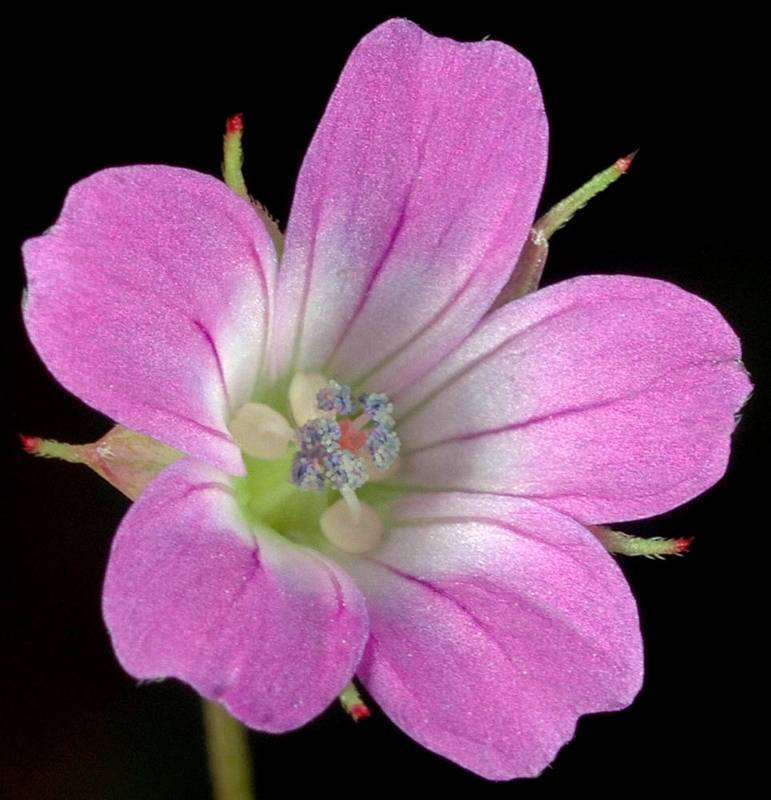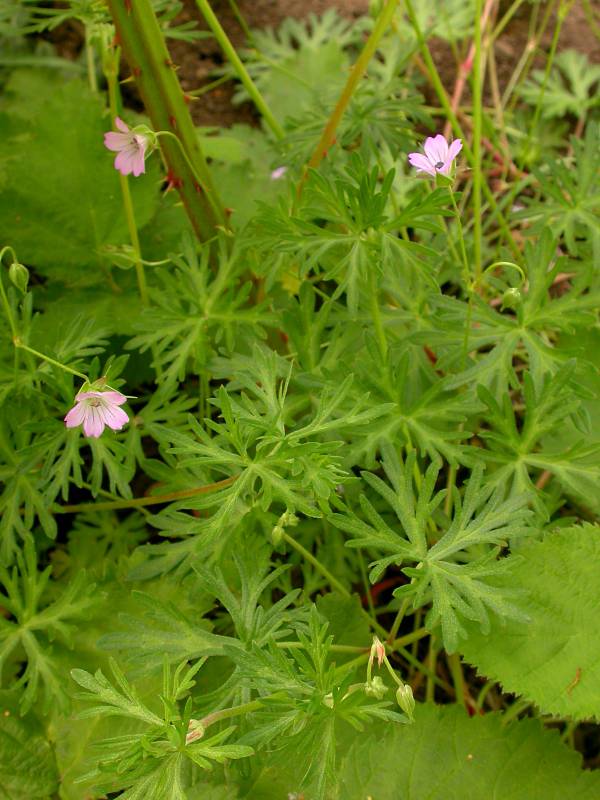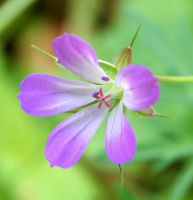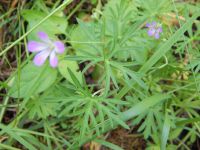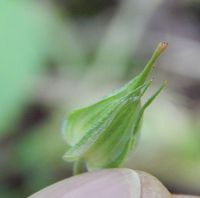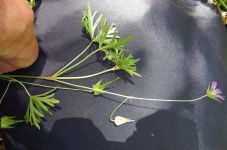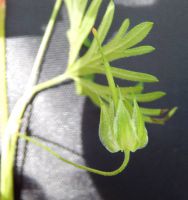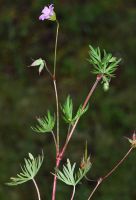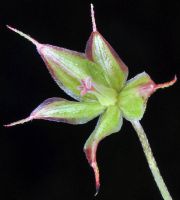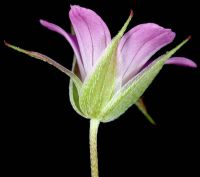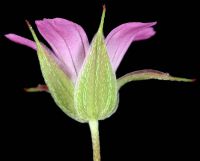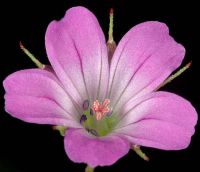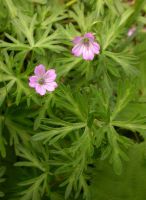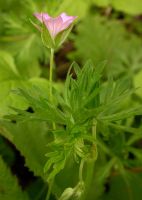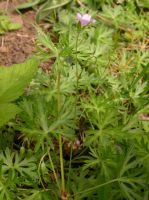Distribution: Chiefly west of the Cascades and along the Columbia River in Washington; British Columbia to California, east to Idaho; also in central and eastern North America.
Habitat: Waste places and disturbed ground.
Flowers: June-August
Origin: Introduced from Europe
Growth Duration: Annual
Conservation Status: Not of concern
Pollination: Bumblebees, bees, flies, wasps, beetles
Strongly appressed-pubescent annual, the stems 1.5-6 dm. long, erect to decumbent.
Leaves long-petiolate, the blades 2-7 cm. broad, 5- to 9-parted palmately, the primary divisions deeply cleft into linear segments.
Flowers few on long pedicels and long, slender peduncles; sepals 5, 5-11 mm. long with a bristle-tip about 2 mm. long; petals 5, 7-11 mm. long, purple, rounded or slightly notched, barely exceeding the sepals; fertile stamens 10, the filaments free; stylar column 1.5 cm. long with a slender beak 3-5 mm. long, stigmas 2 mm.
Mericarps 5, 2.2-2.8 mm, smooth, sparsely bristly; seeds finely pitted.
Publication: Sp. Pl. 2: 682. 1753.
PNW Herbaria: Specimen records of Geranium columbinum in the Consortium of Pacific Northwest Herbaria database
WA Flora Checklist: Geranium columbinum checklist entry
OregonFlora: Geranium columbinum information
E-Flora BC: Geranium columbinum atlas page
CalPhotos: Geranium columbinum photos

